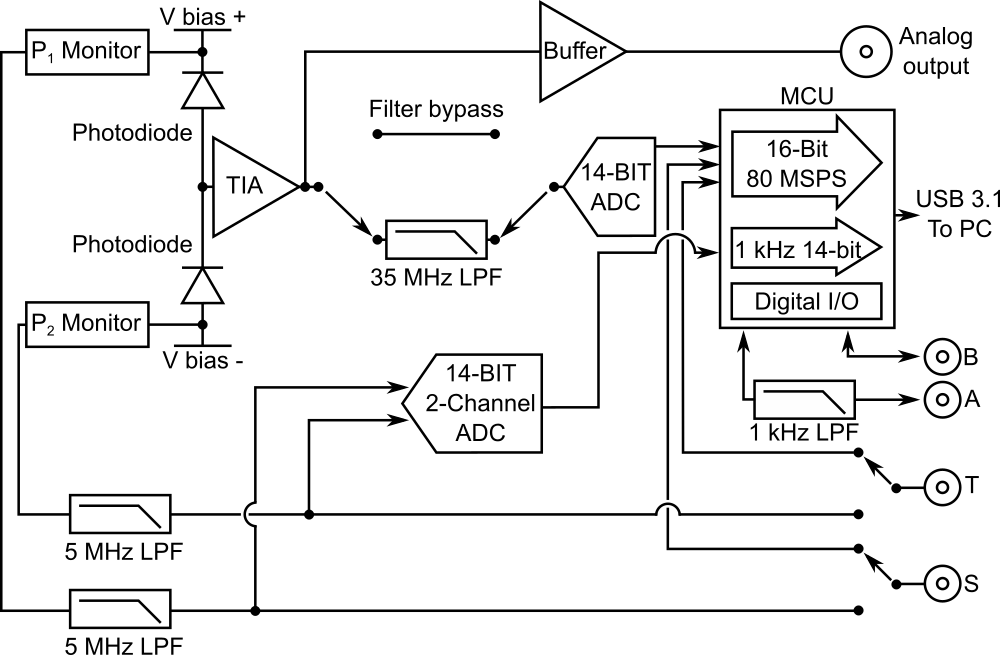DPD80 Balanced User Manual¶
The DPD80 Balanced is functionally very similar to the standard DPD80 and this document will highlight the features that are different. It is recommended to begin by reading the DPD80 User Manual as it provides installation instructions for drivers, the pteroDAQtyl user interface, and the libraries that enable programming in Python, Matlab and C.
Handling Precautions¶
Warning
Avoid electrostatic discharges by grounding yourself before handing the DPD80 USB Photodetector.
Do not exceed the absolute maximum ratings for input power and I/O voltages. These values for each version of the DPD80 USB Photodetector are found on its datasheet.
For free space versions, avoid scratching the photodiode. For fiber coupled versions, make sure that any connector inserted into the FC/APC port is clean and cover the FC/APC port when it is not in use.
DPD80 Functional Diagram¶

Differential Power Measurements¶
The photodiode currents of the two balanced photodiodes are immediately subtracted from each other, before transimpedance amplification. After the transimpedance amplifier the RF voltage signal diverges into two paths: one to the analog output SMA and the other through a selectable anti-aliasing filter to the internal 14-bit 80 MSPS ADC. From the transimpedance amplifier onwards the signal paths are identical to the standard DPD80.
P1, P2 Measurements¶
The main difference between the DPD80 Balanced and the standard DPD80 is the ability to measure P1 and P2 independently. Analog voltages corresponding to P1 and P2 with bandwidths from DC to 5 MHz are multiplexed to the S and T ports. Being able to measure P1 and P2 separately can be convenient when setting up your experiment.
Note
By default on the DPD80 Balanced Photodetectors, the S and T ports are configured as analog power monitor outputs of the individual photodiode signals. To reconfigure ports S and T and trigger/sync ports, use ri_set_p1_select() (libri) or p1_select() property (ripy).